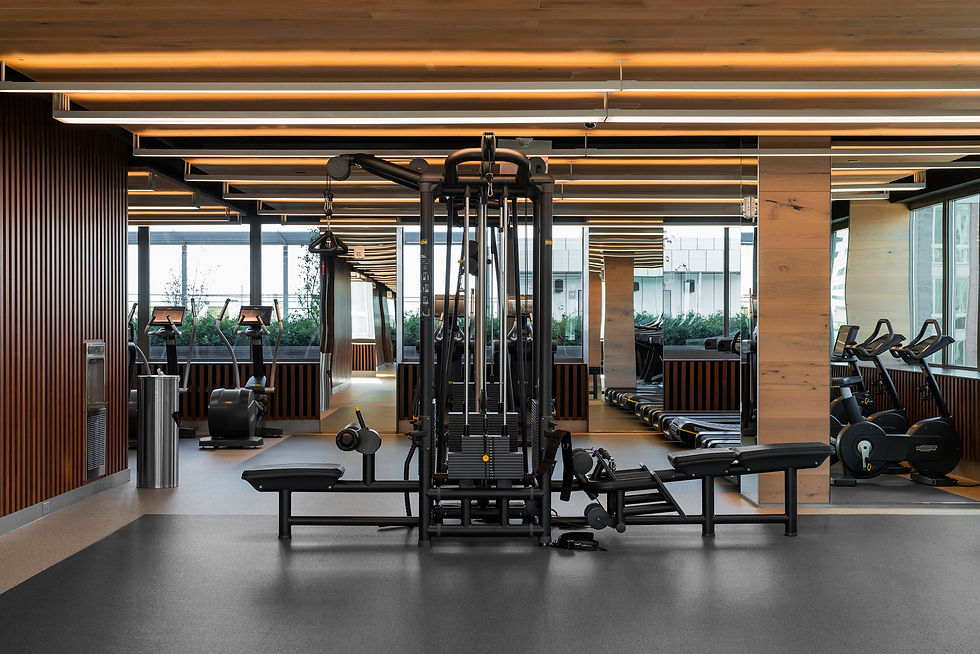Why Isn't My House Selling? The Anatomy of a Failed Sale
- Carlos E. Gimenez

- May 29
- 5 min read
Updated: Jun 2
When a property remains on the market for months without any specific transactions being closed, the most common diagnosis is usually a superficial one: "the market is slow." However, this statement, although partly true, does not alone explain why some similar properties sell and others do not. The reality is that behind every stalled transaction is a combination of factors operating simultaneously—economic, psychological, technical, and strategic—that often go unnoticed by the owners.

Below, we break down, one by one, the most common reasons why a home fails to sell in Paraguay today. This isn't meant to simplify, but rather to show the real complexity of a decision involving money, emotions, and lost opportunities.
1. The Price: Between Affective Memory and Market Reality
In Paraguay, as in many emerging markets, the average homeowner sets their home price subjectively. They calculate how much it cost to build, how much they invested in expansions, how much they "think" their neighborhood is worth, and often, how much they would like to receive to buy something else. But the market doesn't pay for memories or expectations. It pays for perceived and comparative value.
In a context of low mortgage penetration and reduced liquidity—especially for mid- to high-priced properties—listings that fall outside the market simply don't generate interest or traffic. They become invisible, even if they are active on the most relevant portals.
2. The Strategic Error of the Entry Price
A less visible—but equally damaging—mistake is what's known as "miscalibrated entry pricing ." That is, entering the market with a high price with the intention of "negotiating later." This common practice often backfires.
In today's digital environment, where searches are filtered by price range, square footage, and area, an overpriced home not only receives fewer clicks, but is often excluded from searches altogether. And by the time its price finally drops, it has already lost traction and trust.
The market has a memory: a property that has been listed for 120 days without any activity is marked as "problem" or "last option," even if it is later adjusted correctly.
3. Aesthetics: When Photos Don't Sell
The first visit today doesn't happen at the property, but on a cell phone. And if the photos don't convey clarity, order, and warmth, the potential buyer won't move on to the next step. In the digital environment, the image doesn't just accompany the product: it is the product, at least in that first split second when it's decided whether it's worth digging deeper.
Often, homeowners don't invest in professional photography because they believe it "doesn't make a difference." But the data tells us otherwise. According to the National Association of Realtors (NAR), 87% of buyers find photos the most useful resource when evaluating properties online. And a PhotoUp study showed that listings with professional photography receive up to 61% more views than those with low-quality images.
In the mid-to-high-end segment, where prices hover around USD 200,000 or more, not using professional photos is like posting a premium car without washing it. Not only does it detract from its value, but it also conveys sloppiness and neglect.
Added to that, the lack of ambiance (staging), empty rooms or outdated decor create an emotional disconnect : the house does not project the lifestyle the buyer is seeking to achieve.
4. Land, Typology and Functional Obsolescence
Many homes built 15, 20, or even 30 years ago were designed with a spatial logic that no longer fits contemporary living styles. Large social areas—such as formal living rooms and separate dining rooms—were prioritized, while bedrooms were left behind in terms of surface area and functionality. Bathrooms were often small, with poor ventilation and no storage space. Walk-in closets, if they existed, were minimal or reserved exclusively for the master suite.
Kitchens were generally closed, conceived as service areas with no integration with the rest of the house. The idea of versatile spaces, such as a desk or home work area, was practically nonexistent. Garages also followed another paradigm: they were designed for smaller vehicles, without taking into account the growth of the vehicle fleet or the simultaneous use of multiple vehicles by the same family.
Furthermore, structural design used to be fragmented into multiple levels—stairs, slopes, mezzanines—which today are difficult to access or adapt to new family dynamics, especially when older adults or young children are present.
In technical terms, this translates into functional obsolescence: not because the property is deteriorating, but because it no longer meets current usage expectations efficiently or comfortably. Habits have changed: today we seek integration, natural light, cross-ventilation, connected spaces, usable surfaces, and a fluid everyday experience.
5. Location: Is Your Neighborhood What It Used To Be?
In the seller's mind, the neighborhood often retains the prestige it had 10 or 20 years ago. But the market is changing. Neighborhoods that were once considered "well-located" may now be overcrowded, poorly connected, unsafe, or have aging infrastructure.
Furthermore, new, expanding areas can offer more modern, better-connected alternatives, lower prices per square meter, and greater potential. Competition shifted, and the owner didn't always realize it.
6. Sales Strategy: Who's Telling the Story?
A key point: selling a property isn't about listing it. It's about building a strategic narrative around it. What you communicate, how you present it, why it's relevant to that specific buyer profile. Is it designed for a family? An investor? An expat? Everyone is looking for something different, and the message must be tailored.
Many properties don't sell simply because they're poorly positioned in the market. And that's a strategic error, not a product error.
7. The Human Factor: Are You Really Prepared to Sell?
There is something that no advisor, architect, or appraiser can solve without starting with the owner: the emotional willingness to close a cycle.
Many sales fail because, deep down, the owner doesn't want to sell yet, or isn't ready to let go of that part. This manifests itself in subtle ways:
Not responding in time
Reject reasonable offers
Cancel visits at the last minute
Demanding excessive conditions
The emotionality of selling is real. A house isn't just a possession: it's a symbol, a memory archive, an extension of the self. And a cycle doesn't just close.
8. Wrong Channel: When the Problem Isn't the House, But Who's Telling It
Not all properties sell equally, and not all channels are suitable for all types of properties. Selling a USD 300,000 family home is not the same as marketing a USD 65,000 investment unit. Each property requires a tailored strategy, its own language, and a specific audience.
Listing a home on the wrong channel can result in many views... but no calls. If the portal or platform doesn't reach the right buyer profile, visibility becomes noise. The same thing happens when a mid- or high-end property is advertised without a narrative or aesthetic: it loses appeal before it's even considered.
Who represents you also plays a role. A real estate agency specializing in volume won't necessarily know how to market a property with outstanding architecture or unique attributes. And an agent who lacks time or motivation won't adequately defend the property's value.
A good house that's poorly presented, poorly advertised, or poorly advised is unlikely to sell. Because in today's market, it's not enough to be visible: you have to be well positioned. And for that, the channel matters as much as the product.
Your house not selling isn't a punishment from the market. It's often a mirror that reflects all the inconsistencies in the offer: a price that doesn't reflect the real value, a sloppy presentation, a poorly defined strategy, or an unconscious intention to not close the cycle yet.
The real estate market doesn't punish: it responds. And if it doesn't respond, you have to read it more intelligently. Selling well isn't about luck; it's about preparation. And above all, it's about being honest with yourself.


